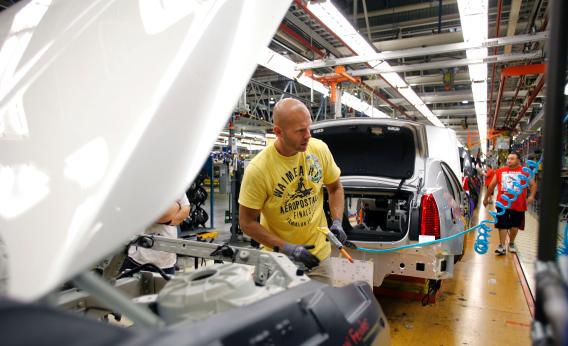The Obama administration has decided it’s a success worth trumpeting, but I still think the auto bailout was a pretty dubious policy initiative that’s keeping the country stuck in a dead-end auto oriented industrial policy. That said, many critics of the bailout don’t appear to recognize why the issue arose in the first place.
Randal O’Toole, who does transportation policy for Cato, for example has a piece where he says the companies should have just gone through the regular bankruptcy process. In his telling the only reason not to do that was to allocate the losses in a different way. Bondholders took a bigger haircut than they would have in a normal bailout, and the Auto Workers’ Union took a somewhat smaller haircut than it would have in a normal bailout. So there’s Obama trampling ont he rule of law for the sake of his union buddies.
What this story misses is the actual reason for the bailouts, to wit the financial crisis of 2008.
You probably remember that one? Bear Stears got a quasi-bailout, Lehman Brothers went bankrupt, small banks were entering FDIC conservatorship (i.e., going bust) left and right, big banks needed a huge capital infusion from the federal government to stay solvent, and generally everyone was freaking out. Now in order to organize the kind of bankruptcy reorganization that O’Toole is talking about, you need to arrange some financing. The point of the bankruptcy process is to renegotiate contracts and debts such that your enterprise is solvent. But that means that by definition your enterprise isn’t solvent. Someone has to lend it money to tide you over while doing the rearranging. And these are big companies, so it would need to be a lot of money.
That kind of debtor-in-possession financing is impossible to organize during a financial crisis, which is why the companies’ executives came to the government in the first place.
The executives had no desire to put unions ahead of bondholders or bolster the re-election of a president who hadn’t even been inaugurated yet. If they could have organized a Chapter 11 bankruptcy they would have. But they couldn’t. Given the financial crisis they were going to be forced into a Chapter 7 liquidation. That’s what happened to Borders a little while back. They literally sold everything in the stores—including the lamps and the shelves—and then gave whatever money that raised to the bondholders. But liquidating an ongoing manufacturing enterprise is much uglier than liquidating a bookstore. Nobody really needs half a car factory.
All things considered, I still think liquidation combined with a gigantic helicopter drop of money on Michigan and Oghio would probabl have been a better policy than government-organized bailout. But the Chapter 11 option O’Toole is recommending wasn’t on the table. If it had been, everyone from the executives to the administration would have preferred it.
